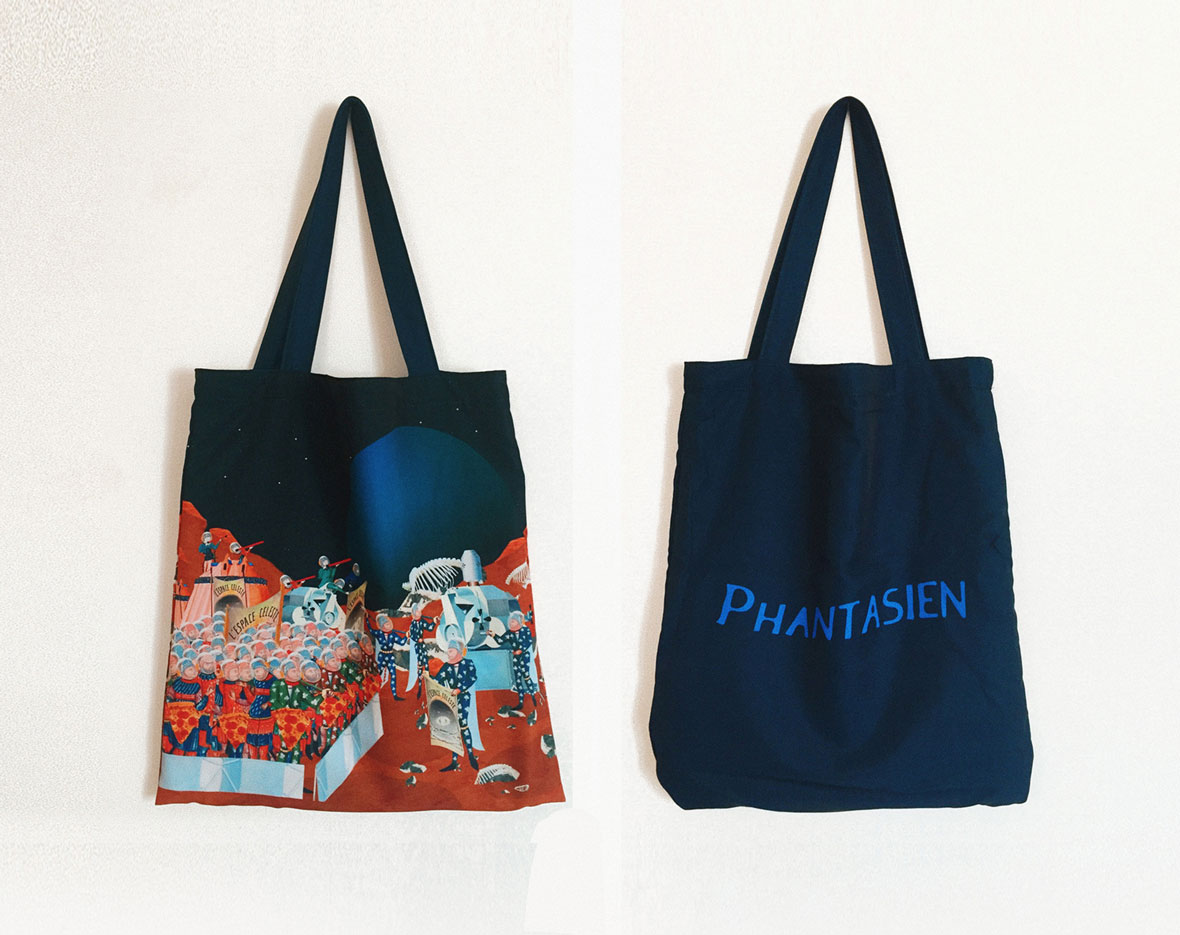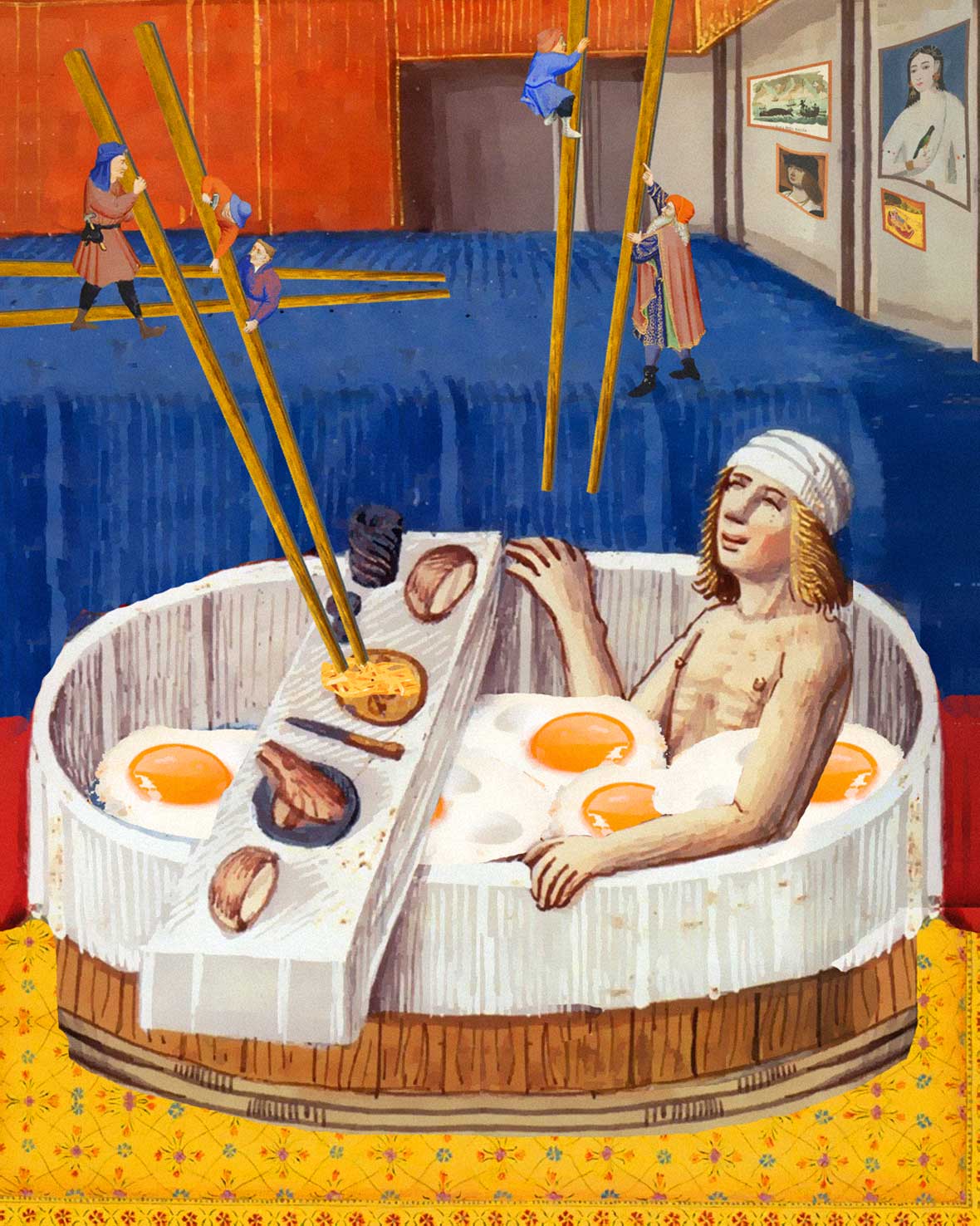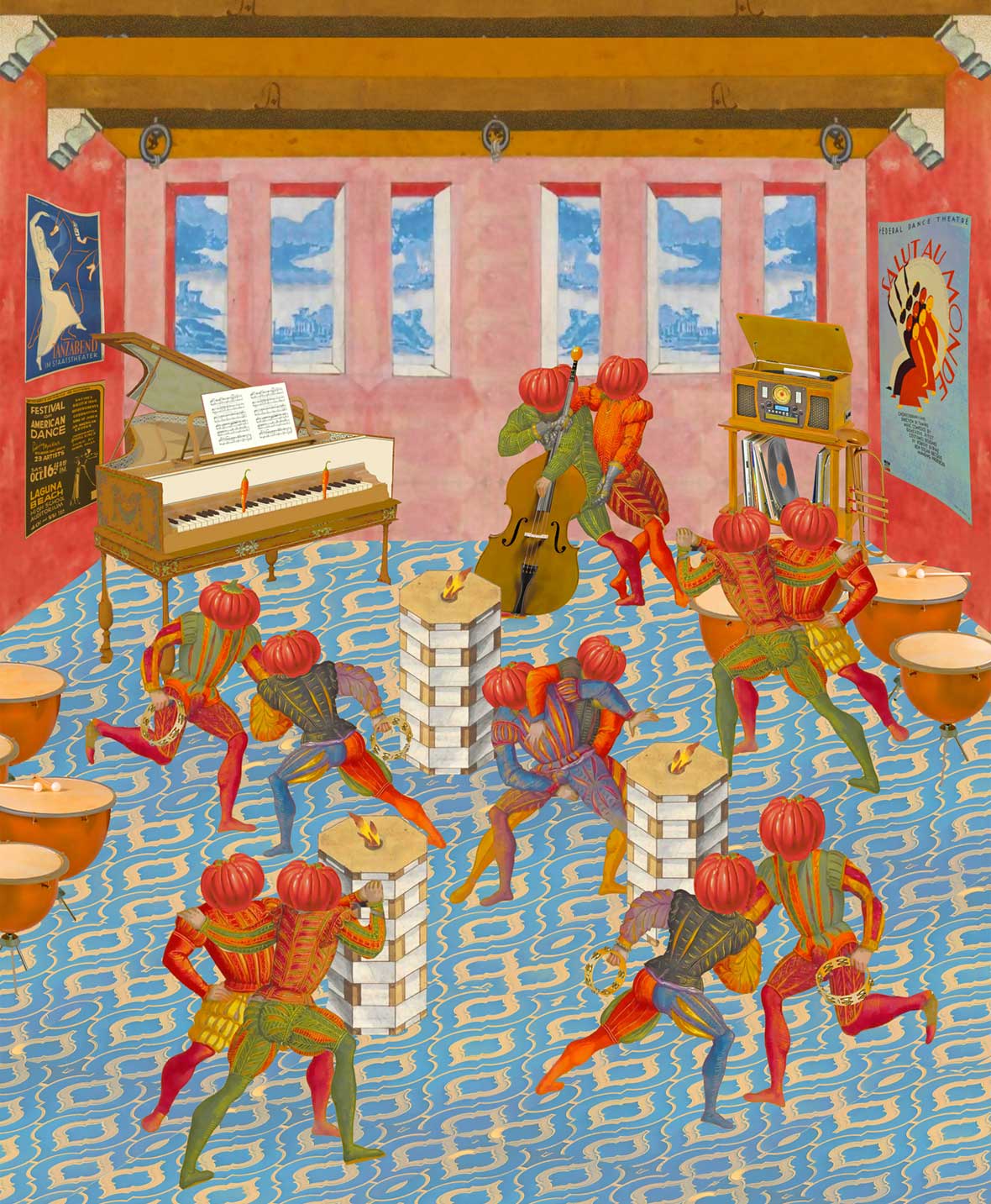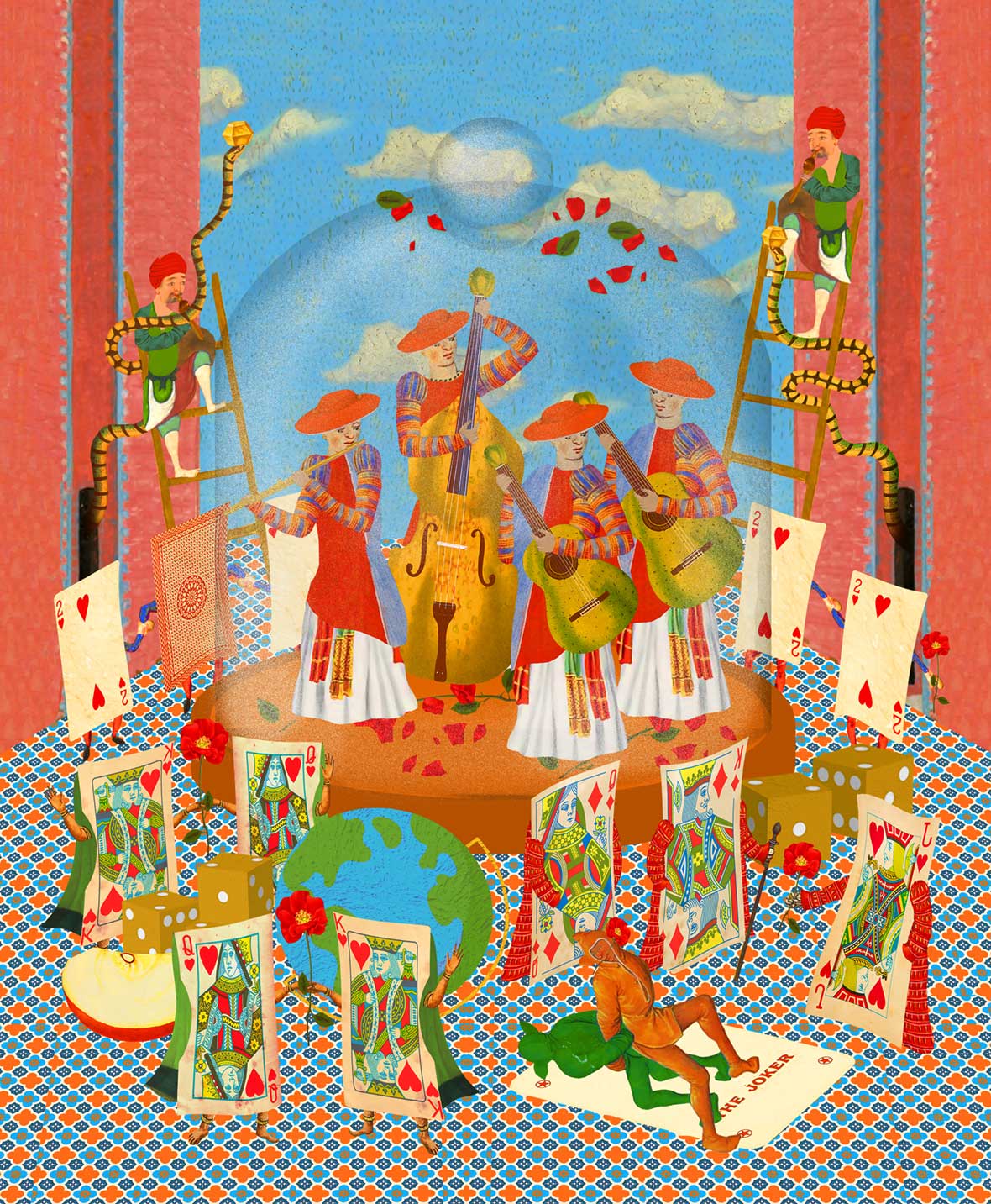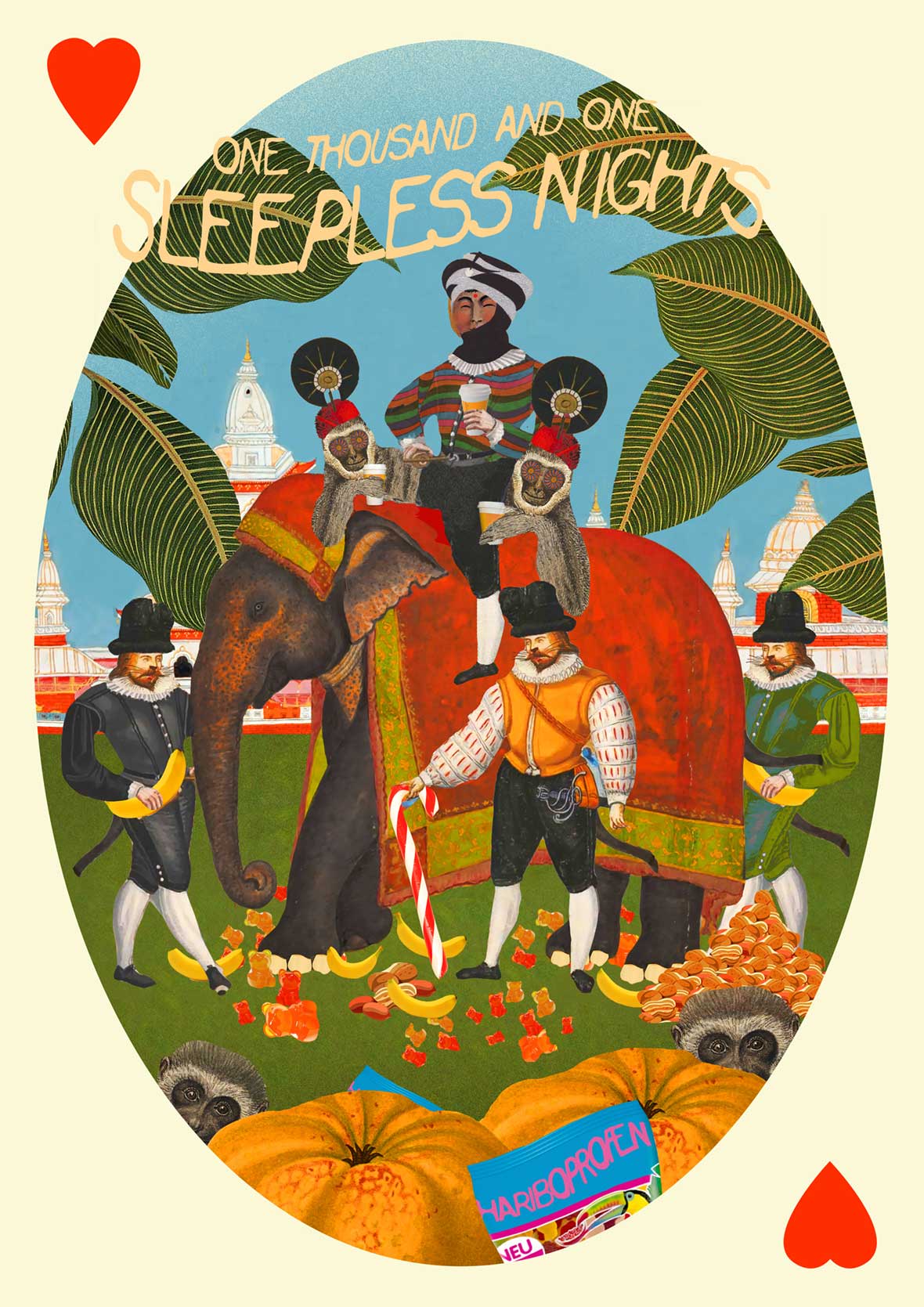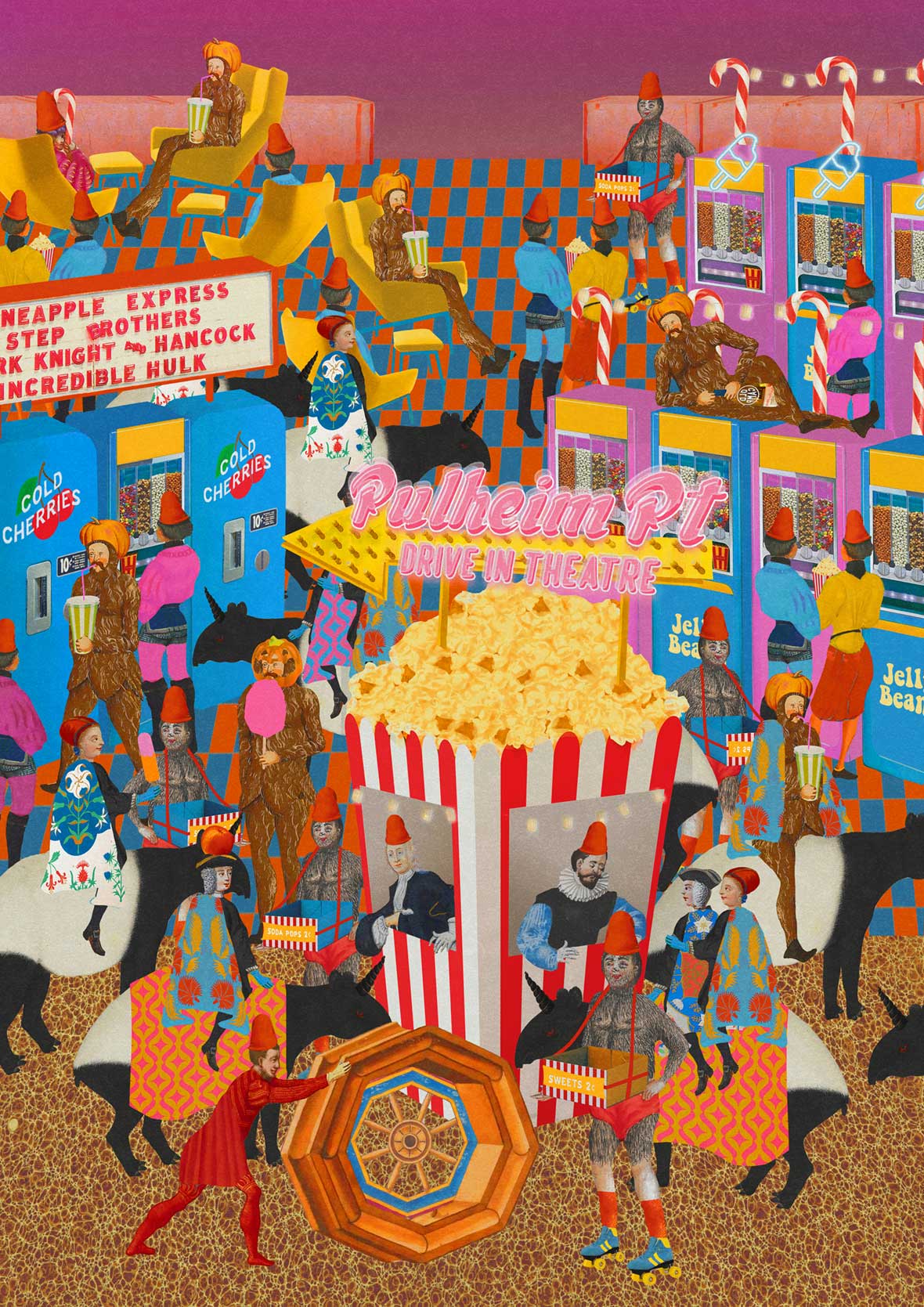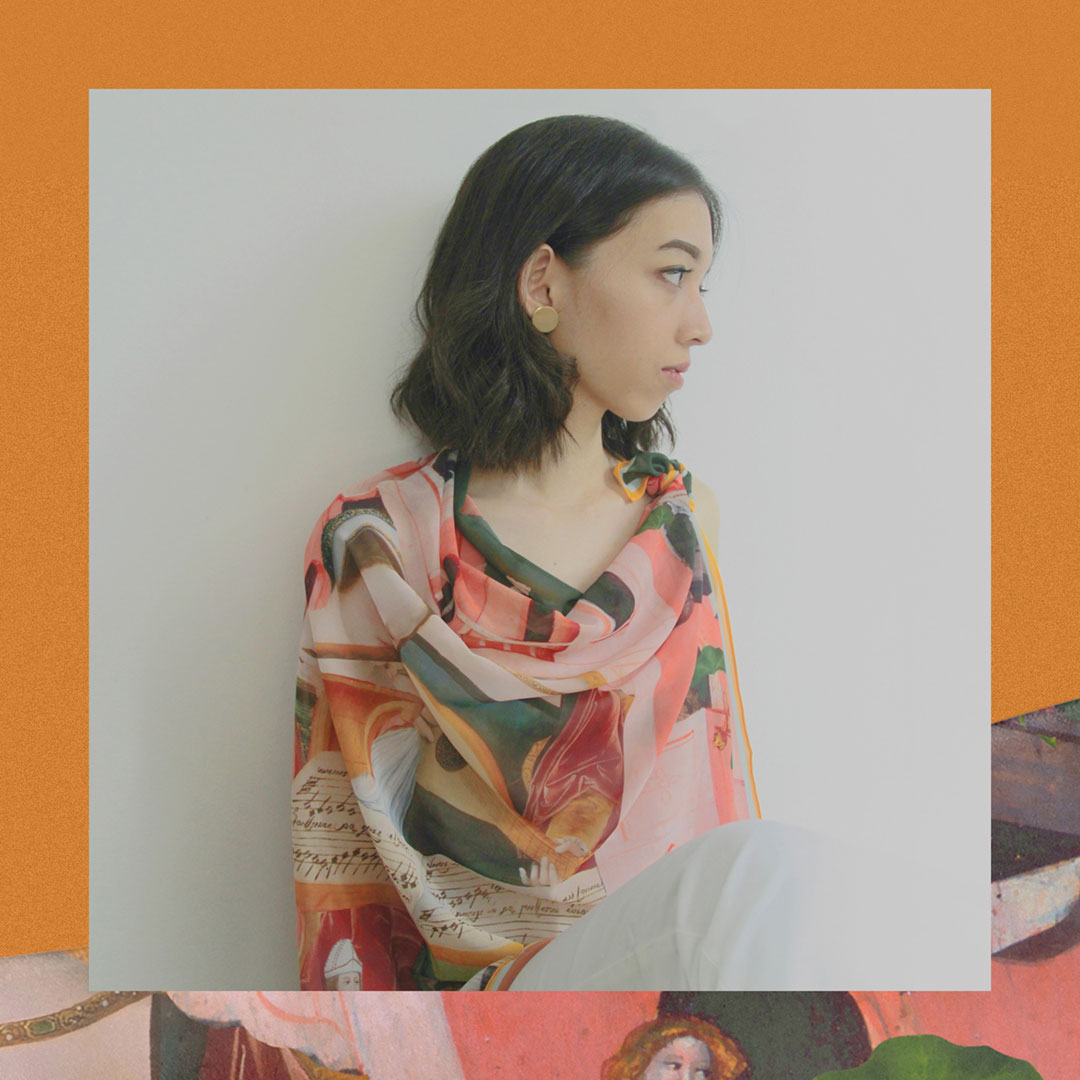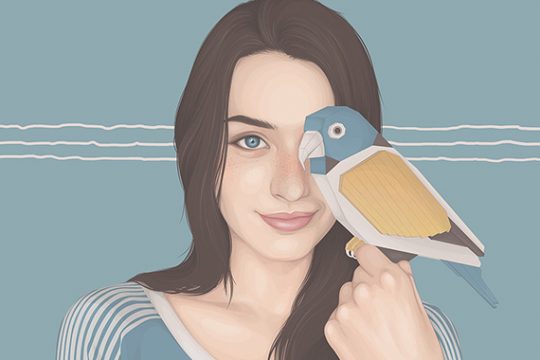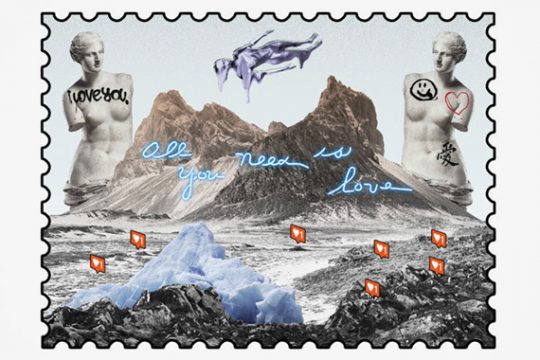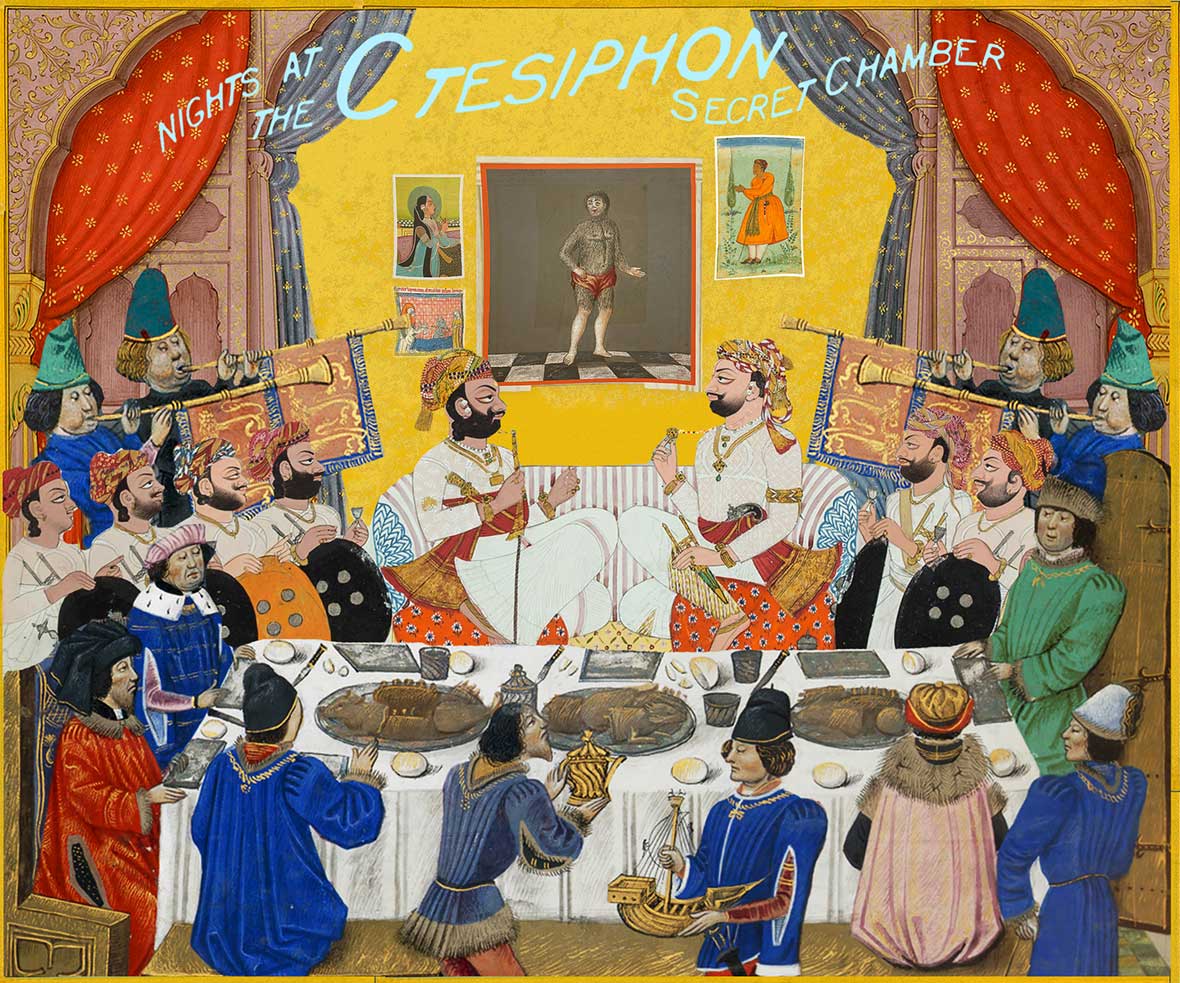
What happens when you cross an illuminated manuscript with a digital collage? Indonesian illustrator Anindya Anugrah offers an appealingly quirky answer. She repurposes archival images to create playful scenes that whisk together Europe and Asia, the middle ages and the twenty-first century. Yet for all their head-spinning, continent-spanning bravura, they never feel forced—just a little uncanny, like images from some alternate universe where Indian royalty dined with European nobles.
Anugrah has a special fondness for medieval or Renaissance touches. “As a child I was very much influenced by the thought that all fairy tales took place in the medieval times,” she explains. Since then, she’s had a bit of an obsession with the European middle ages, and in particular with illuminated manuscripts. “Most figures depicted in these manuscripts have a similar, sad-looking expression, no matter where they come from or what purpose they serve,” she says. “I like the idea of giving those figures a different ‘life’ and ‘role’—a happy one with modern twists.”
当欧洲中世纪的手抄本遇上现代数字拼贴画,会擦出什么火花?印尼插画家 Anindya Anugrah 提供了一个另类却引人入胜的解答。她重新利用这些历史图像,将欧洲和亚洲、中世纪和二十一世纪巧妙地融合在有趣的场景里。然而,这些令人目眩神迷的大胆拼接看起来丝毫没有一点不协调,取而代之的是那异乎寻常的神秘感——她的创作像是撷取自另一个宇宙,在那里印度和欧洲的皇室贵族会一起用餐。
Anindya Anugrah 特别喜欢中世纪和文艺复兴时期的风格。“当我还小的时候,我认为所有童话故事都发生在中古世纪。”她解释道。从那之后,她对中世纪就产生了一点痴迷,尤其是那些带有华美装饰的手抄本。“这些手抄本里的人大多都带有一种类似的悲伤的表情,无论他们来自何方或是要做什么。因此我想要给这些人物一个不同的生活、扮演不同角色的机会——一个现代的快乐颠覆。”
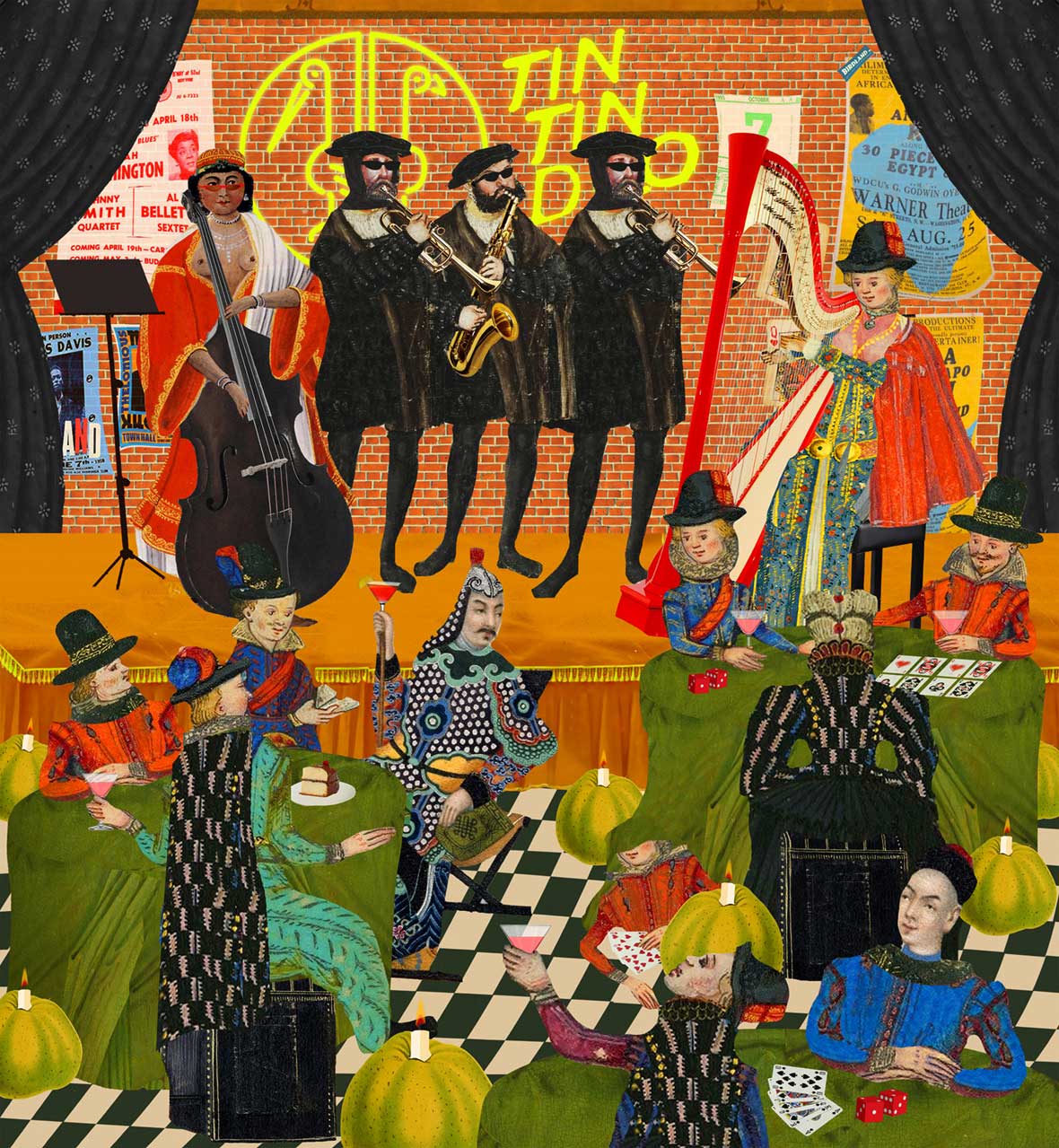
In “Midnight in Birdland,” musicians decked out in what appears to be Elizabethan garb perform onstage in a crowded jazz hall for an European and Central Asian audience. Likewise, “Macaca Nigra Race” shows medieval lords and ladies watching Indonesian macaques lumbering across a finish line on a racing track, while “Saturn” has knights sporting space helmets and pepperoni shields on an expedition to a distant planet. One can’t quite tell if these cross-cultural hybrids are meant to offer some commentary on European or Asian history, or whether Anugrah just enjoys tossing images from the past into a digital blender.
在《Midnight in Birdland》中,音乐家穿着伊丽莎白时代的服装,在一个拥挤的爵士音乐厅里为来自欧洲和中亚的观众表演。《Macaca Nigra Race》展示了一群中世纪的领主和女士,正在观看印尼猕猴在赛道上向终点跋涉;而《Saturn》则有头戴太空头盔的骑士,拿着披萨盾牌进行一场星球远征。我们无法确定这些跨文化的创作是否意在对欧洲或亚洲历史提供一些评论,或者只是 Anindya Anugrah 单纯喜欢将过去的图像丢进数码世界里混合为一。
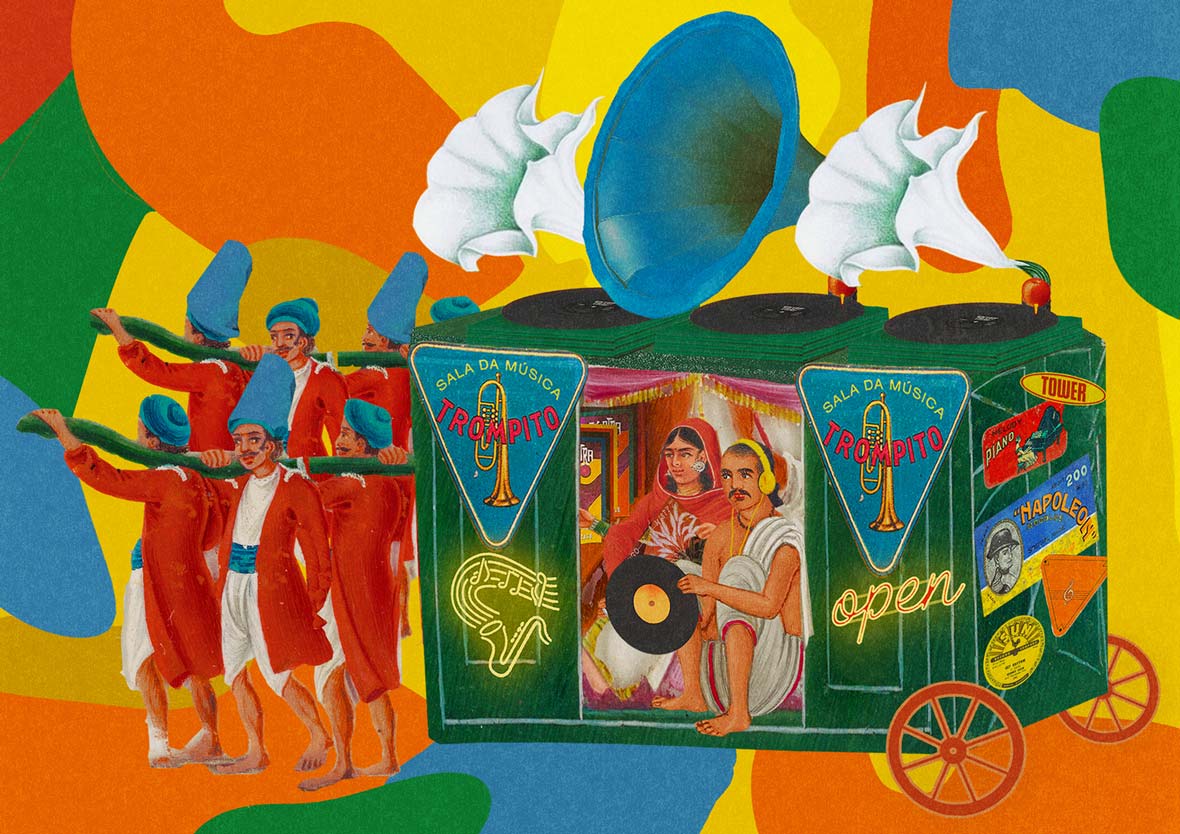
Anugrah began this series of illustrations in law school, while learning about copyright and art appropriation. Like any conscientious lawyer, she uses only images in the public domain, manipulating them and folding them into her own drawings. “I make major alterations to each of these sources, changing the shape and colors of the figures’ clothes, the expressions on their faces, their gestures, etc., and combine them with my own drawings,” she says. The results are entirely unexpected and weirdly familiar—like the picture of the man sitting in a bathtub of fried eggs. So meticulously is the image stitched together that you almost wonder whether she didn’t just unearth an illustration of a bizarre bygone bathing custom.
Anindya Anugrah 在法学院开始创作这一系列插图,同时学习版权和艺术品挪用的相关知识。如同一位尽责的律师,她只会使用公有的图像,将它们再创成符合自己想像的样子。“我大幅更改了这些图像,改变了人物的形状和颜色、脸上的表情、动作等等,并将它们与我自己的绘画结合。”最后结果完全出乎意料,让人感到异常地熟悉——像是那一张有一个男人坐在煎蛋浴缸里的照片。她是如此细致地将图像拼接在一起,让人不禁怀疑她是不是揭露了一个中世纪诡异的洗澡习惯。
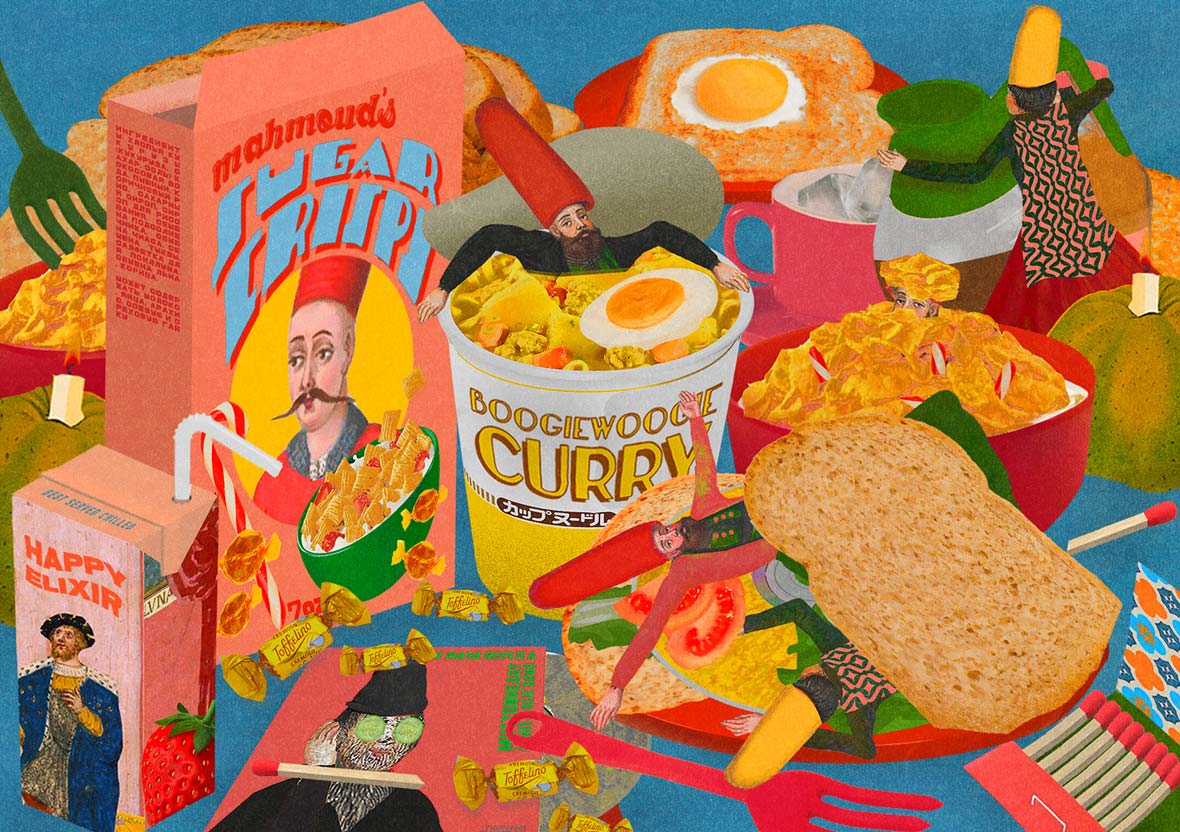
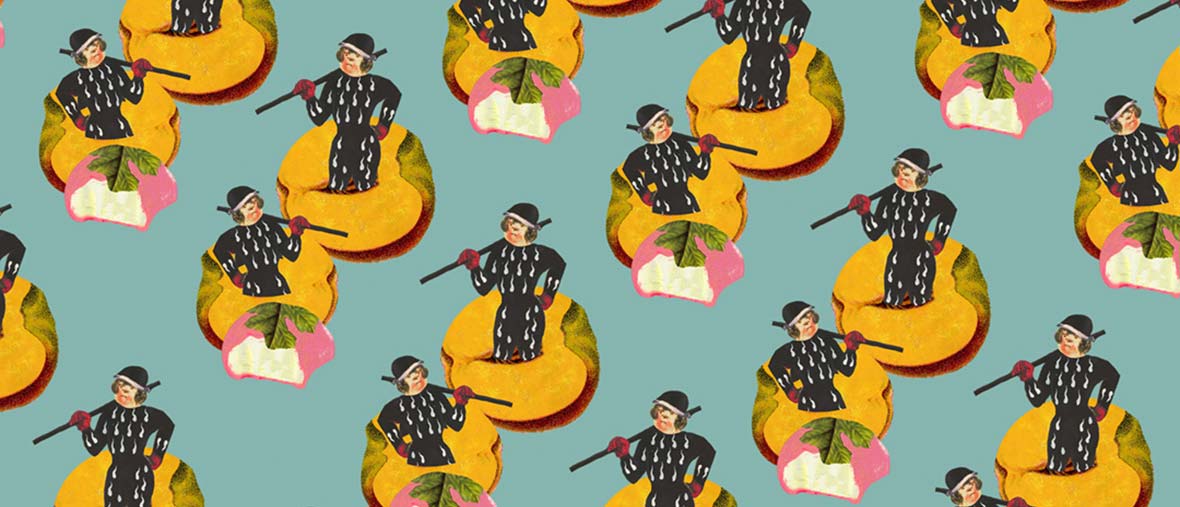
After experimenting with manual collages, Anugrah eventually switched to image-editing software to get the results she wanted. “These collages are intended to look seamless—almost like paintings—so I tried doing them digitally. That’s the method I’ve been using ever since.” She finds images from online sources—archives, or scanned book pages—and carefully recomposes them.
在尝试手工拼贴后,Anindya Anugrah 最终切换到图像编辑软件以达到她想要的结果。“这些拼贴画需要看起来天衣无缝——就像是画出来的——所以我尝试用数码软件去做,从这之后我就一直使用这种方法。”她从在线资源库里的历史档案或是扫描书页中找到图像,并仔细地重新组合它们。
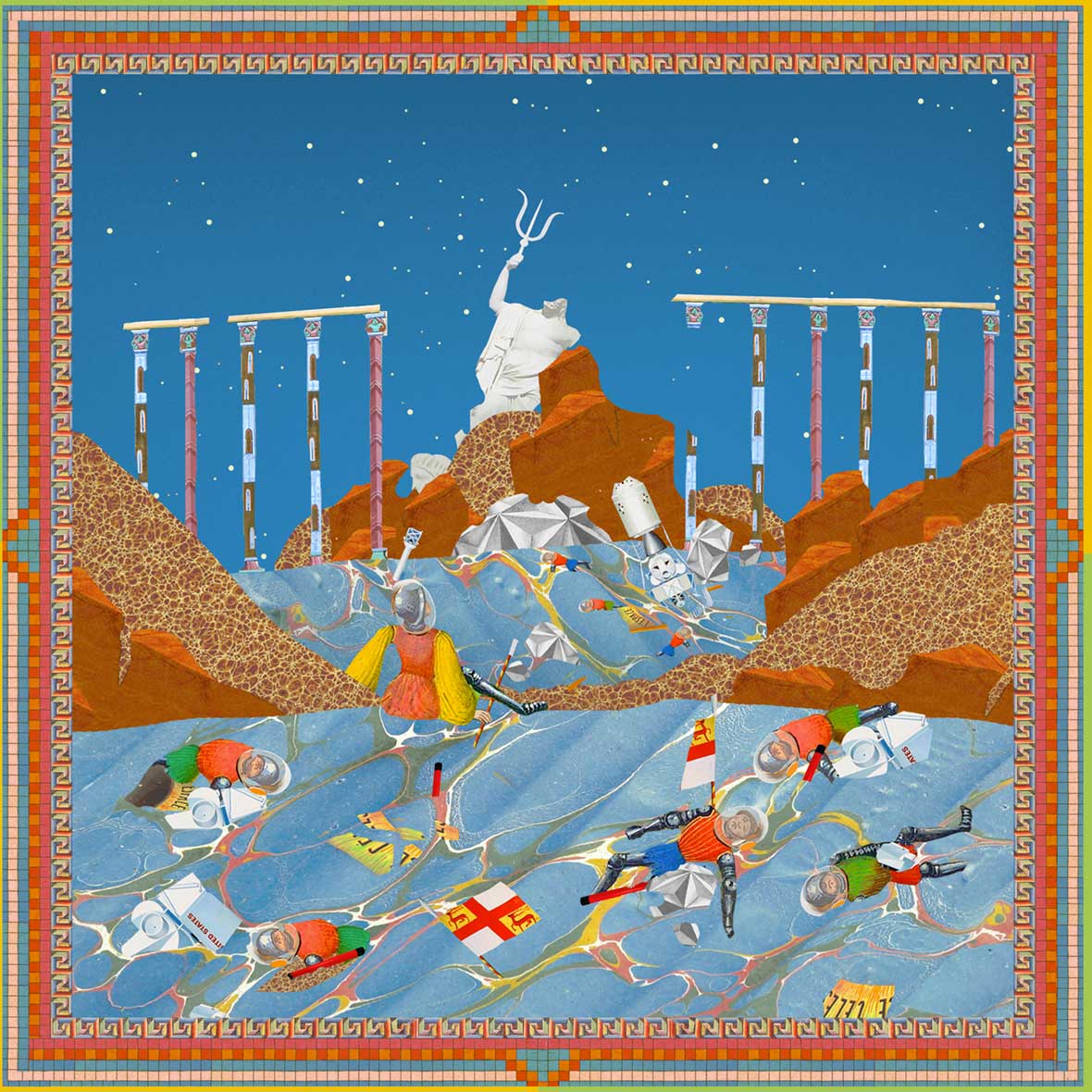
Her scenes don’t just hang on walls or glow on digital screens. They also grace a line of products—scarves, tote bags, and post cards—that she sells under the brand name Phantasien. “I first turned my collages into wearable items to make some money and get noticed. But as my works have developed and my ideas become more complex, I’ve been challenged to explore other media,” she says. “Having my works printed on fabric makes them look more painting-esque and alive than they do on paper.”
Whether on paper, on silk, or on fabric, Anugrah’s digital designs bring a clever new life to art from centuries past.
她的作品不只适合出现在墙上或是屏幕上。他们还推出了一系列产品——围巾、手提袋和明信片。她的品牌叫做 Phantasien。“首先我将拼贴画变成了一些可穿戴的物品,以引起注意和赚一点钱。但随着我的作品发展和想法变得更复杂,我一直在挑战探索其他媒介。”她说,“我后来将作品印在布料上,使得它们看起来比在纸上更具绘画风格和活力。”
无论是在纸上、丝绸上还是在布料上,Anindya Anugrah 的设计都成功为百年之前的艺术注入了新生命。
